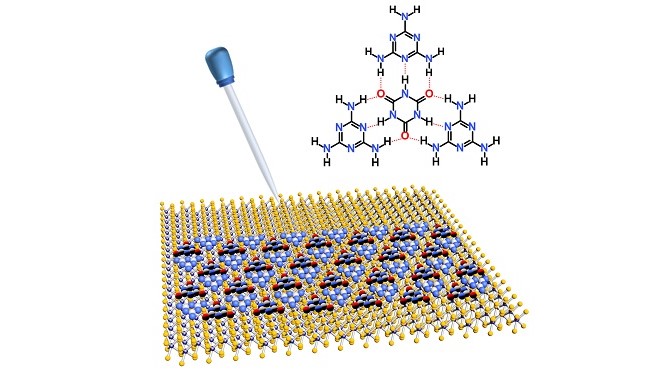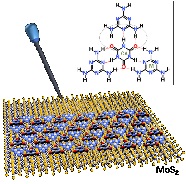Researchers from the University of Strasbourg and CNRS (France), in collaboration with Shanghai Jiao Tong University (China) and Soochow University (China), have developed a molecular strategy to boost the electronic and catalytic performance of two-dimensional (2D) materials. These results have been published in Nature Communications.
Transition metal dichalcogenides – consisting of an atomic layer of a transition metal (such as molybdenum or tungsten) sandwiched between two atomic layers of a chalcogen (such as sulfur or selenium) – occupy a prominent place in the ever-growing family of 2D semiconductors and offer a wide range of electronic, optical, and mechanical properties.
Moreover, the controlled assembly of highly ordered molecular networks on the surface of 2D materials represents a simple, yet effective solution to modulate their electronic characteristics.
In this study, the researchers from Strasbourg, Shanghai and Suzhou have employed two complementary molecular building blocks, i.e., melamine and cyanuric acid, to form extended supramolecular networks onto different transition metal dichalcogenides, i.e., molybdenum disulfide (MoS2) and tungsten diselenide (WSe2).
Melamine and cyanuric acid are small organic molecules that can self-assemble into stable 2D bi-component supramolecular lattices held together by directional and specific non-covalent interactions (intermolecular hydrogen bonds), covering the surface of the underlying inorganic 2D material on the hundreds of square micrometer scale.
The positive cooperative effect in the charge transfer process from the supramolecular network to the transition metal dichalcogenide, as a function of the packing density of the molecular adlayer, boosts both the electronic and catalytic properties of the resulting hybrid organic/inorganic structure, outperforming the pristine 2D material.
These findings demonstrate that the decoration of 2D materials with programmable 2D supramolecular networks is a powerful strategy towards the realization of high-performance multifunctional optoelectronic devices and clean energy technologies.
Schematic representation of the supramolecular network and molecular structure of the cyanuric acid (CA)·melamine (M) pattern formed through hydrogen bonds on MoS2.
Boosting the electronic and catalytic properties of 2D semiconductors with supramolecular 2D hydrogen-bonded superlattices
Can Wang, Rafael Furlan de Oliveira, Kaiyue Jiang, Yuda Zhao, Nicholas Turetta, Chun Ma,Bin Han, Haiming Zhang, Diana Tranca, Xiaodong Zhuang, Lifeng Chi, Artur Ciesielski* & Paolo Samorì*
Nature Communications, 2022, 13, 510


